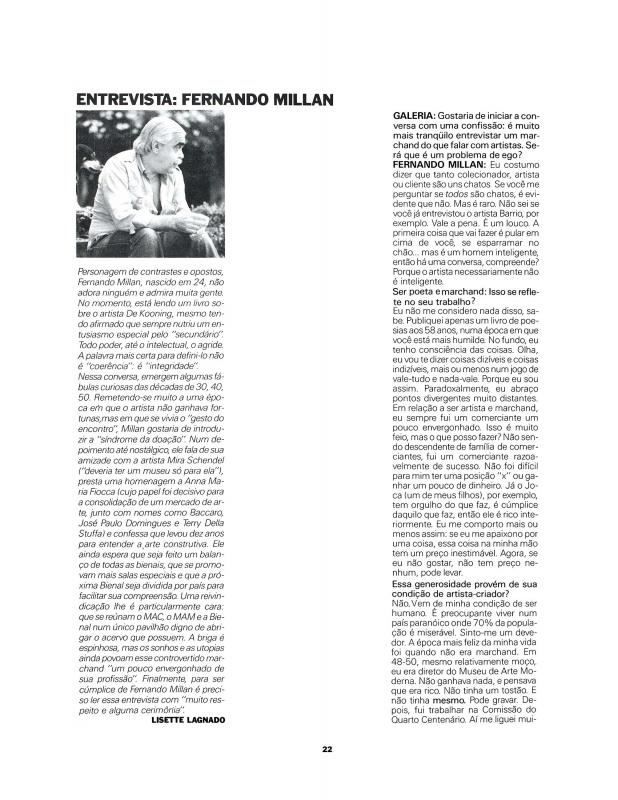This review of the XX Bienal Internacional de São Paulo sheds light on some of the curatorial criteria that the author, Lisette Lagnado, later applied when she took over the reins at the XXVII São Paulo biennial. National representation was abolished at the twenty-seventh edition of the event, an innovation that eliminated geopolitical considerations from decisions made about art. It also prevented any “language analogy” (which was exacerbated at the XVIII Bienal directed by Sheila Leirner). Avoiding those common issues, the flow of people was rearranged inside the building by using the original (side) entrance.
The art critic and curator Lisette Lagnado (b. 1961) is also a teacher. She began her career in the 1980s and was soon steeped in recent contemporary art. She played an important role in the so-called Projeto Leonilson, which was created shortly after the artist’s death in 1994, originally to produce a Catalogue raisonné of his work designed to expose it to a wider audience. Among other activities, Lagnado is known for her curatorial work at the XXVII Bienal Internacional de São Paulo (2006).
[As complementary reading, see another couple of articles by Lagnado in the ICAA digital archive: “La instauración, entre la instalación y la performance” (doc. no. 1111435); and “Desejo de servir = Serving desire” (doc. no. 1111262). See also her interviews with Sheila Leirner (doc. no. 1111294); Fernando Millan (doc. no. 1111293); Thomas Cohn (doc. no. 1111322); and José Leonilson (doc. no. 1110768)].






